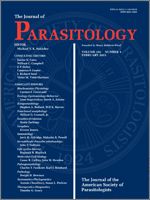Classification of most monogeneans is primarily based on size, shape, and arrangement of haptoral sclerites. These structures are often obscured or misinterpreted when studied using light microscopy, leading to confusion regarding defining characters. Scanning electron microscopy (SEM) has predominantly been used to study haptoral sclerites in smaller monogeneans, focusing on hooks and anchors. In the Diplozoidae, SEM has not been used to study haptoral sclerites. Using new and modified techniques, the sclerites of diplozoids collected in South Africa were successfully studied using SEM. The digestion buffer from a DNA extraction kit was used to digest the surrounding tissue, and Poly-L-lysine–coated and concavity slides were employed to limit the movement and loss of sclerites, with the latter being more user-friendly. In addition to the success of visualizing the sclerites using SEM, the digested tissue from as little as half of the haptor provided viable genetic material for molecular characterization. From the results presented here, the study of the sclerites of larger monogeneans using SEM, including those bearing clamps, is a viable possibility for future research. Also, this method may be beneficial for the study of other, non-haptoral sclerites, such as cirri in other families of monogeneans. During this study, Labeo capensis was noted as a valid host of Paradiplozoon vaalense in a region of the Vaal River where the type host, Labeo umbratus, appears to be absent.
BioOne.org will be down briefly for maintenance on 17 December 2024 between 18:00-22:00 Pacific Time US. We apologize for any inconvenience.
How to translate text using browser tools
1 February 2015
Soft Tissue Digestion of Paradiplozoon vaalense for SEM of Sclerites and Simultaneous Molecular Analysis
Q. M. Dos Santos,
A. Avenant-Oldewage
ACCESS THE FULL ARTICLE

Journal of Parasitology
Vol. 101 • No. 1
February 2015
Vol. 101 • No. 1
February 2015




